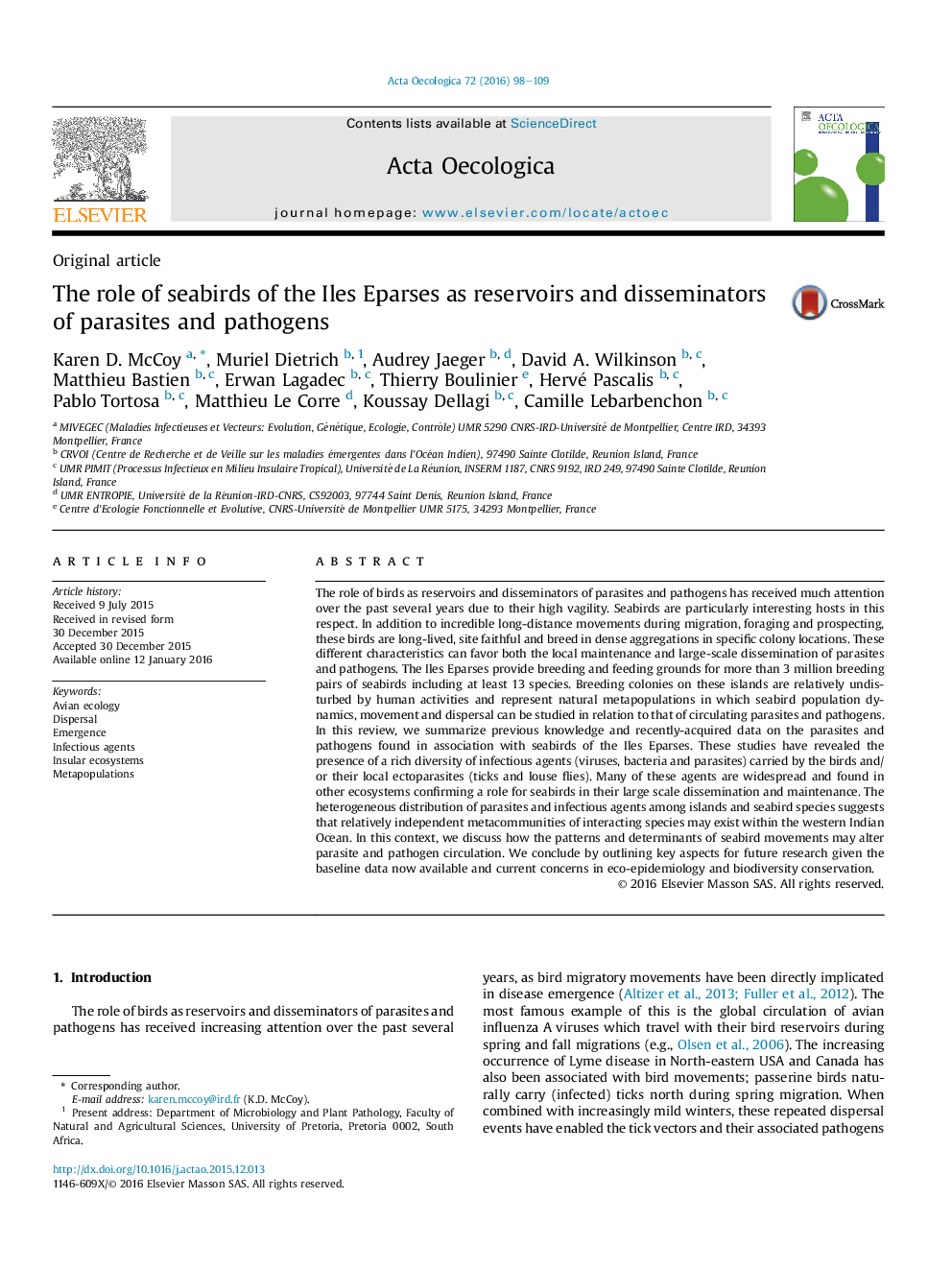| Article ID | Journal | Published Year | Pages | File Type |
|---|---|---|---|---|
| 4380772 | Acta Oecologica | 2016 | 12 Pages |
•Seabirds make up a major proportion of vertebrate biodiversity in the Iles Eparses.•Colonial breeding may favor the local transmission and spread of infectious agents.•A diversity of parasites and pathogens have been described within these colonies.•Patterns of infection are linked to seabird genetic structure and individual movements.•Future work is required to understand impacts on seabird dynamics and disease risk.
The role of birds as reservoirs and disseminators of parasites and pathogens has received much attention over the past several years due to their high vagility. Seabirds are particularly interesting hosts in this respect. In addition to incredible long-distance movements during migration, foraging and prospecting, these birds are long-lived, site faithful and breed in dense aggregations in specific colony locations. These different characteristics can favor both the local maintenance and large-scale dissemination of parasites and pathogens. The Iles Eparses provide breeding and feeding grounds for more than 3 million breeding pairs of seabirds including at least 13 species. Breeding colonies on these islands are relatively undisturbed by human activities and represent natural metapopulations in which seabird population dynamics, movement and dispersal can be studied in relation to that of circulating parasites and pathogens. In this review, we summarize previous knowledge and recently-acquired data on the parasites and pathogens found in association with seabirds of the Iles Eparses. These studies have revealed the presence of a rich diversity of infectious agents (viruses, bacteria and parasites) carried by the birds and/or their local ectoparasites (ticks and louse flies). Many of these agents are widespread and found in other ecosystems confirming a role for seabirds in their large scale dissemination and maintenance. The heterogeneous distribution of parasites and infectious agents among islands and seabird species suggests that relatively independent metacommunities of interacting species may exist within the western Indian Ocean. In this context, we discuss how the patterns and determinants of seabird movements may alter parasite and pathogen circulation. We conclude by outlining key aspects for future research given the baseline data now available and current concerns in eco-epidemiology and biodiversity conservation.
